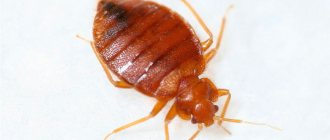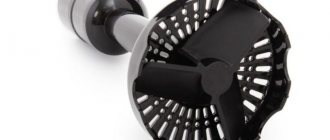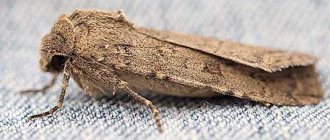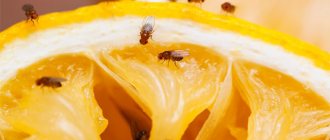The soldier bug, also known as the fireman bug or the Cossack bug, until recently was considered a safe insect, and this is so if the population in the area is insignificant. If there are a lot of such bugs, beets and dill suffer, and lettuce leaves may be damaged. Therefore, there is a need for a ruthless struggle.
Let's look at how to get rid of the soldier bug using chemicals and folk remedies. We will also give brief information on the biological characteristics of the insect.
Soldier bugs on the property and in the apartment - how to get rid of them?
Bug soldiers are also popularly called firefighters and standard bearers. Children really like these beautiful little bugs, just like ladybugs, because they have very bright, elegant, friendly colors. Rarely does anyone ask: are red bugs dangerous or perhaps toxic? Are they poisonous? Do we need to fight them?
We have useful tips for you
The name of the insect in Latin is Pyrrhocoris apterus. The beetle is called the sodatik because of its bright red shield. In the spring, when the sun begins to shine longer, soldier bugs emerge in large numbers from their winter homes, which they usually make under leaves or pieces of bark, to awaken from hibernation in heated places such as rocks or tree trunks.
There are more than 400 species of fire beetles in the world. Of these, only five different species live in Europe.
These are types of bedbugs. They do not have chewing organs like classic beetles, but only a proboscis through which liquid food can be absorbed. In addition, only a few specimens are capable of flight, as the wings are usually poorly developed. An ordinary soldier bug is about one centimeter in size. Depending on the variety, the color may vary because pigment development is highly dependent on temperature. After hatching from the eggs, the so-called nymphs molt five times. Black spots of color develop late. Their final color is achieved only in adulthood.
Soldier bugs send signals to their fellows using pheromones. When danger threatens, they release alarming aromas, and the community dissolves in space in a matter of seconds.
Pest recognition methods
The presence of a bedbug in an area can be determined by the presence of adults, clutches of eggs and larvae. The fight against an unpleasant neighborhood should begin with differentiating the pest from other species, many of which are useful to the gardener. Therefore, you need to study the soldier bug.
Top cover:
- orange with black pattern;
- sometimes yellow with the same ornament may be found;
- greenish yellow.
The description of the soldier bug is a bit like a beetle. But the beetle has an oblong, convex body, and the bug has an oval and flattened body. They can be distinguished by what the bugs eat and what the fireman beetle eats.
Knowing for sure what soldier bugs look like, that insects cannot fly at all, while the fireman beetle, although not very similar in appearance to a hemipteran pest, flies, albeit rather slowly, then there is not even a particular need to look at what the bug eats in order to do not confuse it with flying beetles, which bring undoubted benefits.
Bedbugs have quite characteristic differences to differentiate them:
- bright color with black spots;
- oval and flattened body;
- the presence on plants of clusters of eggs and larvae drinking juices from the leaves;
- characteristic marks on garden crops left after they have been saturated;
- death of individual plants that cannot tolerate the damage caused to them;
- traces of vital activity with a characteristic unpleasant odor.
Damaged cabbage leaf by the wingless red bug The damage that a cute and bright insect, completely harmless and ordinary in appearance, which everyone admired while observing in the green grass, can cause to a lovingly grown crop, causes only one thought to an experienced gardener or gardener: this is a soldier bug, like get rid?
What does a soldier bug look like (photo)
They look really dangerous, but are completely harmless. The size of the soldier bug can be from 3 to 20 millimeters. The flat, elongated body is bright red in color, the upper part of the body is usually hairy. The flat head of insects is narrowed at the base. The pronotum is already wide, slightly shiny and finely ribbed elytra, between which there is a shallow middle furrow. All bedbugs have six legs; by this feature they can be distinguished from ticks, which have 8 legs. The larvae are three centimeters in size and are long-tailed, highly flattened, mealworm-like insects.
Scientists have long paid attention to these fiery insects:
- bright black and red colors signal to predators: I am inedible! Soldier bugs have stink glands on their abdomens, the secretions of which spoil the birds' appetites and act as a contact poison that causes paralysis in other attacking insects.
- the coloring and, above all, the pattern vary greatly; especially the black spots on the wing wings depend on external conditions as well as temperature
- Soldier bugs are found in all warm and temperate countries of Europe
In 1891, Heinrich von Henking discovered an unusual chromosome while studying the red bug that resembled an "X". This was the first time it was proven that there is a connection between sets of chromosomes and gender.
In the mid-sixties of the last century, Karel Slama made a remarkable discovery: soldier bugs kept in terrariums on paper from Europe developed normally for adult insects, while bugs that lived on American paper remained in the larval stage or died. The findings were very interesting. The reason is that American paper was made from balsam fir wood. And this, in turn, produced hormones in the gluttonous beetles that inhibited development. Amazing realization: plants can protect themselves from intruders!
In recent years, researchers have discovered that soldier bugs produce certain chemicals, peptides, to protect against bacteria. Experiments on mice have shown that these substances can protect insects from coliform bacteria and salmonella. Now the researchers hope that these peptides act against bacteria that are immune to antibiotics.
Signs of the appearance of wingless soldier bugs in the garden
From mid-March, when it gets warmer, adult soldier bugs leave the soil where they overwinter and prepare for the mating season from April to May.
In some years, at the first rays of the sun, whole hordes of red-black-eyed insects crawl out of their winter shelters in the ground and collectively bask on rocks or in a warm place in a forest, park or garden. They can be seen on houses, plants, gardens and balconies. Soldier bugs are very attractive because of their color. They seem to be dressed up in a red T-shirt, which is decorated with black dots, lines or triangles.
Soldier bugs are very sociable; they never come alone and are often found in hundreds. Little red and black bugs always bring their “friends” with them. With their colors they resemble exotic animals and seem a little threatening.
Where is it distributed?
The soldier bug is widespread throughout Eurasia, northern Africa and the United States. Countries with a temperate climate are favorable for insect reproduction.
Bedbug habitat:
- under the bark of trees;
- on stumps;
- in piles of dry grass and leaves;
- at the foundations of houses, baths, gazebos and other outbuildings;
- in the fence and its foundation.
kath_gruendisorder_vortexentomologist_arina
During hibernation, insects are found under heaps of garbage, in humus, in trees - under the bark or in hollows.
Is your garden or balcony infested with firebugs?
Many gardeners may wonder if their plants are at risk and can they remove this infestation?
Red bug larvae prefer to live under the bark of dead trees, where they feed on worms. Sometimes they feed on the larvae of other beetle species, such as bark beetles. In rare cases, when food is insufficient, the larvae are prone to cannibalism.
Adult animals feed on nectar, pollen or honeydew. Development from larva to adult bedbug takes about two to three years. Pupation occurs in the cradle between the tree and the bark.
Red bugs contain cantharidin, a benzofuran compound. The natural product is created when animals eat other insects, and some species are used for mating females. Cantharidin is very irritating to human skin and mucous membranes, so be careful.
As mentioned, soldier bug larvae also feed on pests such as bark beetle larvae. Thus, they can be considered useful. Even adult beetles do not harm plants, since they feed mainly on dew. Fears that soldier bugs are pests are unfounded, even in mass cases. If you find animals on your plants in the garden, you have nothing to worry about.
Habitats
They take food in liquid form through their proboscis. To consume food, its proboscis bores a hole in the shell of fallen seeds or fruits, leaving a disintegrating secretion, and then absorbs the resulting nutrient-rich juice.
Soldier bugs prefer linden and mallow. In general, they are not considered hazardous to plant health. However, in the case of a particularly high concentration of beetles on one plant, it may happen that damage to flower buds or leaf buds occurs. But this is an extremely rare case.
Life cycle
Once temperatures rise in the spring, thousands of firebugs will crawl out of winter quarters in mid-March and bask in the first rays of sun on rocks, house walls or tree trunks. This, as stated above, increases their metabolism and prepares them for the upcoming breeding in April and May.
Copulation can take from several hours to several days. A female soldier bug mates with several males. Males try to prolong the duration of copulation as long as possible so that no competitor can then mate with the same female. This is why you can often observe how two fire beetles seem to hang endlessly over each other, or two beetles seem to be stuck together with their back parts.
A 30-hour sexual encounter begins, during which the female lays up to one hundred eggs in various locations and simply carries her partner on her back. To do this, the female looks for protected places, for example, under stones or a layer of leaves. After hatching in May, the nymphs go through six different juvenile stages with different colors until they finally reach the emergence of the soldier beetle. Only one generation of fire beetles is born each year.
Prevention
So, if you don’t want the population of soldiers in your garden to multiply and expand, and ultimately go on the attack, then start using protective measures even when you have not yet seen a single pest in your area. For example, you can plant garden crops and grapes as far as possible from alfalfa and other members of the legume family, which bedbugs simply adore and which provide them with a haven during the harsh winter months.
If you have to endure living next to a neighbor who loves alfalfa and prefers a Moorish lawn to a chaise longue in the middle of a Russian field, then at least mow the weeds as low and close to the fence as possible, and then collect the mowed grass and burn it. There may be both ovipositor and bug larvae on the grass. Do not allow this to happen on your property; if there is a lawn, it must be cut to the minimum permitted height.
Before planting young plants on a plot of, say, the same seedlings, protect it as much as possible from attacks by bedbugs - remove all weeds, loosen the soil and destroy wormwood, quinoa and acorn grass on the plot, in this case they will not repel bedbugs, but, on the contrary, will attract them!
Does the soldier bug bite?
They don't bite. Sometimes parents see a fireman's beetle darting around their children's hands; they are afraid that the bug will bite the child. But, strictly speaking, there is no danger. They do not transmit diseases to people and do not harm plants.
Therefore, it is not necessary to fight them. There are no known cases throughout the world in which these beautiful insects were responsible for the death of plants. Since they do no damage, combat is by no means necessary. However, many people are concerned and consider red bugs to be extremely nuisances. Especially when they appear in a house or apartment. This happens very rarely. He can easily get rid of them with a broom and dustpan.
Doesn't bite, doesn't fly
Although in fact the soldier is not a beetle, but a bug. And it has many names: there are scientific ones - the common redbug, or the wingless redbug, and there are local ones - Cossack or Moskalik (this is what this bug is called in Ukraine for its bright red color, reminiscent of the caftan of the Moscow archers). So why did this confusion occur and what allowed scientists to attribute the soldier soldier specifically to bedbugs, and not to beetles?
Firstly, bedbugs do not have the pupal development stage that beetles have.
Secondly, these insects have a different structure of the oral apparatus - our soldier, like his other bug relatives, has a piercing-sucking one, but in beetles it is a gnawing one. Thirdly, they also differ in the structure of their wings: beetles have rigid front wing elytra and do not participate in flight - they fly on their hind wings. But bedbugs have a chitinous covering at the ends of the front elytra with membranes, but the back ones (like, for example, the toy soldier) may not have. Therefore, the common red bug does not fly.
What does the red soldier bug eat?
Soldier bugs do not eat flowers or even lettuce, but they do eat plant juices and small insects. Therefore, in France, fire beetles are also called “gendarmes” because they make sure that aphids do not multiply too much.
Fire beetles are common insects that live on linden trees, mallow trees, acacia trees, chestnut trees, and hibiscus trees. These plants almost magically attract bugs, which pierce the fallen seeds and suck the juice from them.
Firebugs do not suck plant juices from a living plant, like aphids, but, in fact, are limited to their fallen seeds.
Both the fire beetle and its nymphs happily feed on linden fruits and nuts. They drill a small hole in the hard shell with their proboscis and through it release a secretion that liquefies the core. They then suck out the liquid. These bugs only eat liquid food.
As long as there is plenty of food for fire insects in the garden, there is no point in fighting them. Even the most diligent gardener will never eradicate all the insects, and more and more new insects are coming from other areas. Therefore, the best way to get rid of pesky bugs is to remove their food source.
In rare cases, cannibalism has been observed.
Life cycle
Red beetles with black dots reproduce quite quickly, so if even two or three individuals appear, you need to be prepared for their massive invasion. The most favorable climate for living and breeding of soldier bugs is the Eurasian climate, as well as the temperate European zone. That is, Russian latitudes are very suitable for the habitat of red bugs.
The soldier beetle lays oval, pearl-white eggs. Oviposition is more common in plants eaten by the same insects. In just one clutch, the female red beetle produces from 20 to 30 eggs, and after just a week and a half, the first larvae appear from them - small red spiders. The mating process of these insects occurs unusually. Soldier insects are connected to each other by the posterior parts of the body, as a result of which the seed cells move from the male to the abdomen of the female beetle.
Larvae of soldier insects appear with the onset of warm spring days, and at the very beginning of their existence they eat young shoots of weeds and alfalfa. When this type of food ends, red bugs begin to absorb the juice of cultivated vegetation.
How to get rid of soldier bugs in the garden, house and apartment?
You usually don't have to deal with fire bugs. They do not attack humans and pose no danger. It's only when you touch and irritate them that they release the foul secretion.
If individual soldier bugs appear in the house, it is easy to catch them with a paper sheet and take them out.
However, soldier bugs are often found in large numbers, which can be quite annoying in the long run. If, for example, they gather on the walls of houses or on terraces on sunny days or besiege entire bushes in the garden, then from time to time there may be a desire to destroy such a “gathering”.
Habitat
This species has a very wide habitat. It can be found throughout the territory, from the Arctic Circle to tropical forests. It inhabits all of temperate Eurasia and northern Africa, and it has also been introduced to North America. In Russia it is present throughout the territory.
What does it eat?
Red bugs and their larvae consume cell sap, using their proboscis to pierce the hard shell of the leaf and gain access to the nutritious sap, without disdaining any plant growing in the garden. It also comes with the seeds and fruits of some trees and shrubs. In rare cases, the wingless red bug can feast on the corpses of small invertebrates and even resort to cannibalism.
Fighting methods
Our advice: calm down and just put up with the red flag bearers.
Traditional methods
A natural but effective remedy for fire bug control is a mixture of half a liter of water and one to two tablespoons of dish soap. The mixture is poured into a spray bottle. Nests or clusters are sprayed so that the insects die within a short time. But even this “home remedy” must be used carefully and purposefully.
If you want to spare the insects, simply sweep them into something and move them away from the garden. However, if you have mallow and linden in your garden, you'll likely have them back for a visit soon.
Products and chemicals
You can fight them naturally without chemicals.
The use of chemical agents or natural contact insecticides is still not recommended. If you try to get rid of soldier bugs with chemicals, you are also killing other beneficial insects such as bees and bumblebees.
Natural enemies
Soldier bugs have no natural predators. In case of danger, they emit an unpleasant odor, which usually quickly drives away the potential villain. When confronted with insects of the same rank, this is a win-win option.
For birds, the secretion is harmless, but makes the bug inedible. Therefore, birds avoid them. The signal color red enhances this effect. The stench is especially strong when the firebug is destroyed - a clear warning to other attackers. The beetles are not poisonous.
Preventive measures
The following preventive measures will help prevent the appearance of soldier bugs on the site:
- planting plants on the site that repel insects (black cohosh, mustard, wormwood);
- timely weeding and destruction (preferably burning) of weeds, mowing the lawn;
- regular cleaning of the area from plant debris;
- uprooting old stumps;
- removing dried bark from trees;
- correct planting (avoid close proximity of legumes to fruits, berries and vegetables).
It is also advisable to treat the area with insecticidal preparations in the fall after harvesting.











